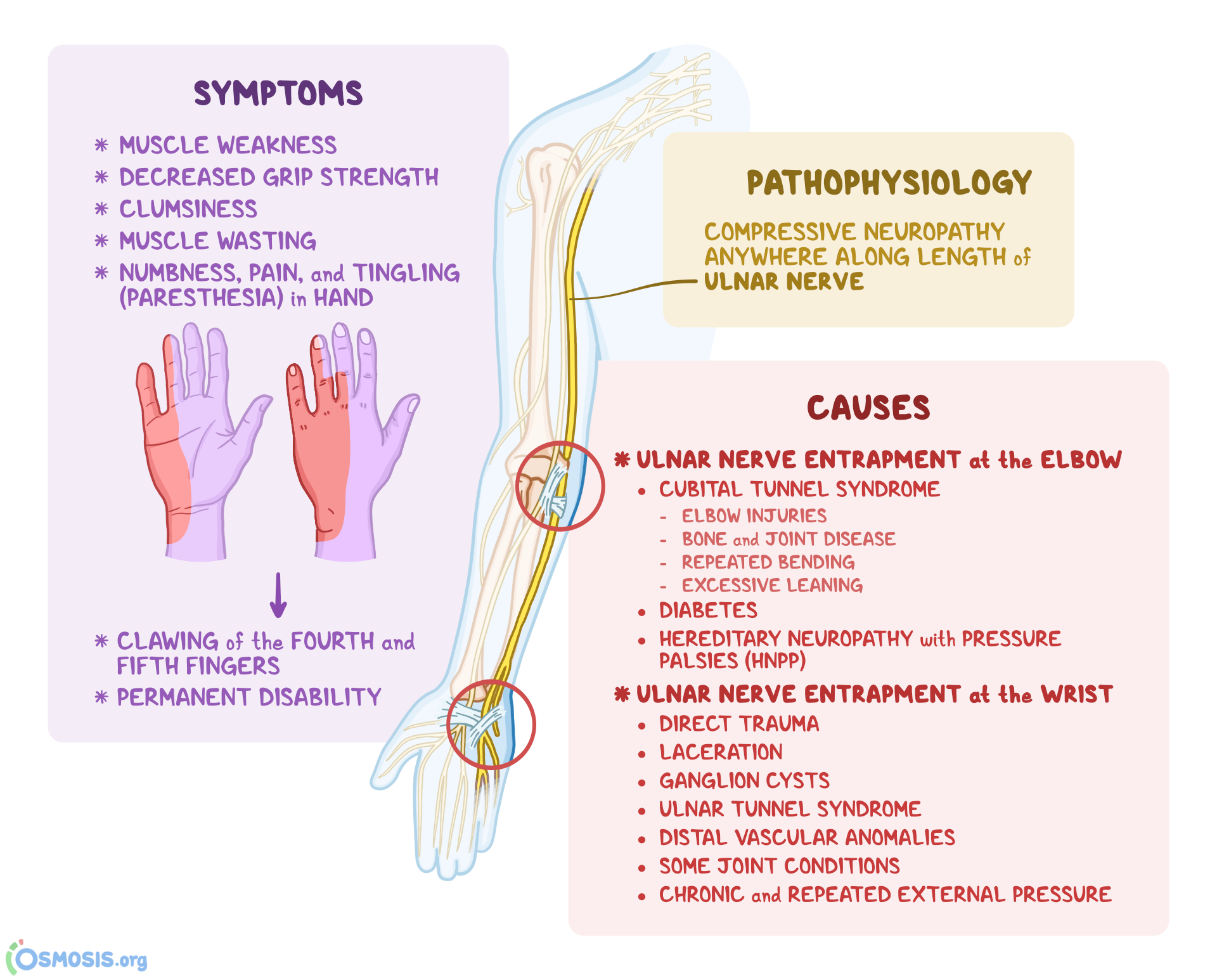

These symptoms occur more frequently at night, and with elbow bending or prolonged resting on the elbow. Intermittent numbness, tingling, and pain to the little finger, ring finger, and the inside of the hand.Commonly reported symptoms associated with Cubital Tunnel Syndrome include: Left untreated, Cubital Tunnel Syndrome can lead to permanent nerve damage in the hand. In general, signs and symptoms of Cubital Tunnel Syndrome arise gradually, progressing to the point where the patient seeks medical attention. When the ulnar nerve is compressed or entrapped, the nerve can tear and become inflamed leading to a variety of symptoms, called cubital tunnel syndrome.

When the elbow is bent, the ulnar nerve can stretch and catch on the bony bump. The roof of the cubital tunnel is covered with a soft tissue called fascia. The cubital tunnel is a narrow passageway on the inside of the elbow formed by bone, muscle, and ligaments with the ulnar nerve passing through its center. The ulnar nerve travels down the back of the elbow behind the bony bump called the medial epicondyle, and through a passageway called the cubital tunnel. Contact our office online at any time or call (512) 476-2830 0 to ask questions or to book a consultation.Cubital Tunnel Syndrome is a condition characterized by compression of the ulnar nerve in an area of the elbow called the cubital tunnel. If you are struggling with any of the symptoms of ulnar nerve compression, our safe and personalized care can provide lasting relief.
ULNAR NERVE COMPRESSION FULL
This process will minimize discomfort during recovery and lay the foundations for regaining your full range of motion. As the tissue heals, it will grow back together but leave more room for the nerve to move.Īfter surgery, you will still need to undergo a treatment regimen of immobilization and physical therapy.


 0 kommentar(er)
0 kommentar(er)
